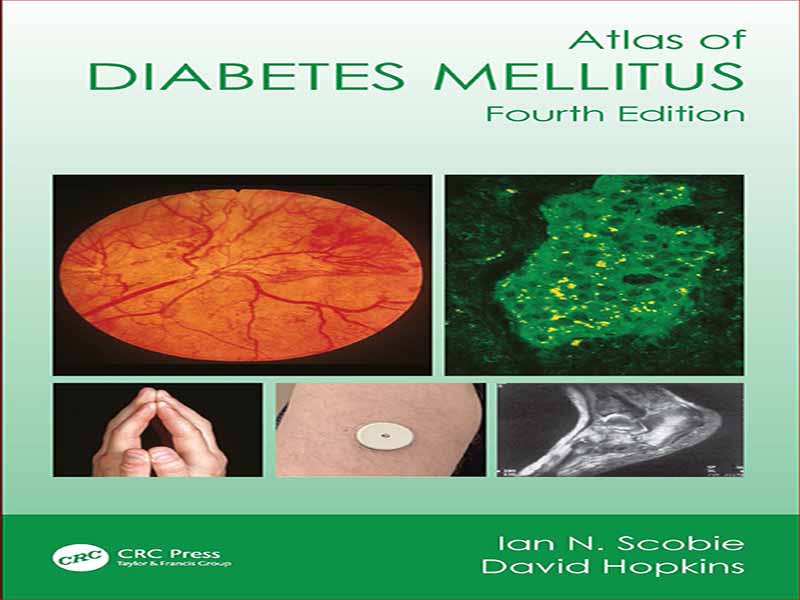- عنوان کتاب: Atlas of Diabetes Mellitus
- نویسنده: Ian N. Scobie and David Hopkins
- حوزه: دیابت
- سال انتشار: 2024
- تعداد صفحه: 132
- زبان اصلی: انگلیسی
- نوع فایل: pdf
- حجم فایل: 24.5 مگابایت
به عنوان دانشجوی سال سوم پزشکی، نمیتوانستم بیماری کسلکنندهتر از دیابت نوع 2 را تعبیر کنم. به هر حال، اگر این صرفاً یک اثر جانبی تنبلی و پرخوری بود، چرا برای یادگیری در مورد آن (و تبدیل آن به بخشی از حرفه خود) تلاش می کنید؟ مواجهه بیشتر با این بیماری و عوارض آن مرا از این برداشت ها بی بهره کرد و همچنین این درک را به خانه آورد که دانش دیابت به عنوان خلاصه ای از بسیاری از طب داخلی عمل می کند. با در نظر گرفتن این موضوع، مطمئناً خوشحالم که مقدمه ویرایش چهارم اطلس دیابت شیرین دکتر ایان ان. اسکوبی را که توسط دکتر دیوید هاپکینز نوشته شده است، بنویسم. در انجام این کار، من راه های معلم، مربی و دوستم دکتر رابرت A. Rizza را دنبال می کنم، که به او مدیون درک این موضوع هستم که دیابت یک بیماری پیچیده و ناهمگن است که سهم های مختلفی در پاتوژنز آن دارد. دیابت چیست و چرا اهمیت دارد؟ اجازه دهید ابتدا به سوال دوم پاسخ دهیم. دیابت در راه تبدیل شدن مستقیم و غیرمستقیم به مهم ترین بیماری مزمن اقتصادی قرن بیست و یکم است. سهم آن در هزینه های مراقبت و بارهای ناشی از از دست دادن اندام، نابینایی، نارسایی کلیوی و بیماری عروقی به راحتی قابل قدردانی است. اگرچه تشخیص نسبتاً ساده است، درمان مزمن، همراه با لزوم تغییر رفتار، به این معنی است که مدیریت می تواند هر چیزی باشد جز. در دهه گذشته پیشرفت هایی در زمینه های مختلف در درمان این بیماری حاصل شده است. با این حال، اجرای این پیشرفت ها پرهزینه و پیچیده است، به این معنی که آنها تا جهانی شدن فاصله زیادی دارند. علاوه بر این، درمانهای جدیدتر ممکن است زیرمجموعههای این بیماری را برای درمان آسانتر کنند، اما به دور از درمان هستند – درسهایی که توسط اطلس دیابت ملیتوس داده میشود بسیار مرتبط هستند. دیابت چیست؟ این یک بیماری منحصر به فرد است که با وجود هیپرگلیسمی تعریف می شود. اگرچه، به طور کلی، دو دسته از دیابت وجود دارد – دیابت با واسطه ایمنی یا دیابت نوع 1 و دیابت نوع 2 – باید آشکار باشد که یکی با طرد (ناقص) دیگری تعریف می شود. عوارض هیپرگلیسمی و هیپوگلی-کمی با این وجود برای هر دو مشترک است. فراتر از همپوشانی بین دیابت نوع 1 و نوع 2، ناهمگونی قابل توجهی در ایجاد دیابت نوع 2 وجود دارد. در حالی که این ممکن است برای متخصص واضح باشد، متخصص عمومی ممکن است از سرنخ های ظریفی که در زمینه تشخیص دیابت مرتبط با هموکروماتوسیس یا آکرومگالی وجود دارد، قدردانی نکند. به طور مشابه، متخصصان معمولاً برای دیدن و درک شرایط نادری مانند لیپودیس تروفی که با دیابت مرتبط هستند، به سالها تجربه نیاز دارند. تنها برای این موارد، اطلس دیابت ملیتوس کمک ارزشمندی به ادبیات است. اگرچه، یا شاید به این دلیل که یک تصویر «فقط» هزار کلمه ارزش دارد، این کتاب عمق و وسعتی را برای مروری بر دیابت ارائه میکند که با تسهیل کسب اطلاعات جدید و مفید، به خوبی به خوانندگانش خدمت میکند. بنابراین، در پایان، میخواهم پیشگفتار نسخه قبلی را تکرار کنم که در آن دکتر ریزا بیان کرد که «… کسانی از شما که این اطلس عالی را به کتابخانه خود اضافه کنید، متوجه میشوید که در اشتیاق من نیز برای این کتاب لذتبخش شریک خواهید بود. .
As a third-year medical student, I could not construe of a more boring disease than type 2 diabetes melli-tus. After all, if this were merely a side-effect of sloth and gluttony, why expend effort in learning about it (and making it a part of one’s career)? Further expo-sure to the disease and its complications disabused me of these impressions and also brought home the realization that a knowledge of diabetes would serve as a summary of most of internal medicine. With this in mind, it is certainly my pleasure to write the Foreword to the fourth edition of Dr Ian N. Scobie’s Atlas of Diabetes Mellitus, co-authored by Dr David Hopkins. In doing so, I am following in the foot-steps of my teacher, mentor and friend Dr Robert A. Rizza, to whom I owe the realization that diabetes is a complex, heterogenous disease with diverse con-tributions to its pathogenesis. What is diabetes and why is it important? Let us answer the latter question first. Diabetes is well on its way to becoming, directly and indirectly, the most economically important chronic disease of the 21st century. Its contribution to the costs of care and the burdens of limb loss, blindness, renal failure and vascular disease are readily appreci-ated. Although the diagnosis is fairly straightfor-ward, chronic therapy, coupled with the necessity to change behaviour, means that management can be anything but. In the past decade, progress has been made on multiple fronts in the treatment of this disease. However, the implementation of these advances is costly and complex, which means that they are far from becoming universal. Moreover, newer therapies may make subsets of the disease easier to treat but are far from curative—the lessons imparted by the Atlas of Diabetes Mellitus remain very relevant. What is diabetes? It is a unique disease defined by the presence of hyperglycaemia. Although, broadly speaking, there are two categories of diabetes—immune-mediated or type 1 diabetes and type 2 diabetes—it should be apparent that one is defined by the (imperfect) exclusion of the other. The complications of hyperglycaemia and hypogly-caemia are nevertheless common to both. Beyond overlap between type 1 and type 2 diabetes, there is significant heterogeneity in the causation of type 2 diabetes. While this may be obvious to the spe-cialist, the generalist may not appreciate the subtle clues underlying a diagnosis of haemochromato-sis- or acromegaly-associated diabetes. Similarly, specialists usually require years of experience to see and understand rare conditions, such as lipodys-trophy, that are associated with diabetes. For these cases alone, Atlas of Diabetes Mellitus remains an invaluable contribution to the literature. Although, or perhaps because, a picture is ‘only’ worth a thousand words, this book provides a depth and breadth to an overview of diabetes that will serve its readers well by facilitating the acqui-sition of new and useful information. Therefore, in conclusion, I would like to echo the Foreword of the previous edition where Dr. Rizza stated that ‘… those of you who choose to add this excellent Atlas to your library will find that you will also share my enthusiasm for this delightful book.’
این کتاب را میتوانید بصورت رایگان از لینک زیر دانلود نمایید.
Download: Atlas of Diabetes Mellitus





































نظرات کاربران